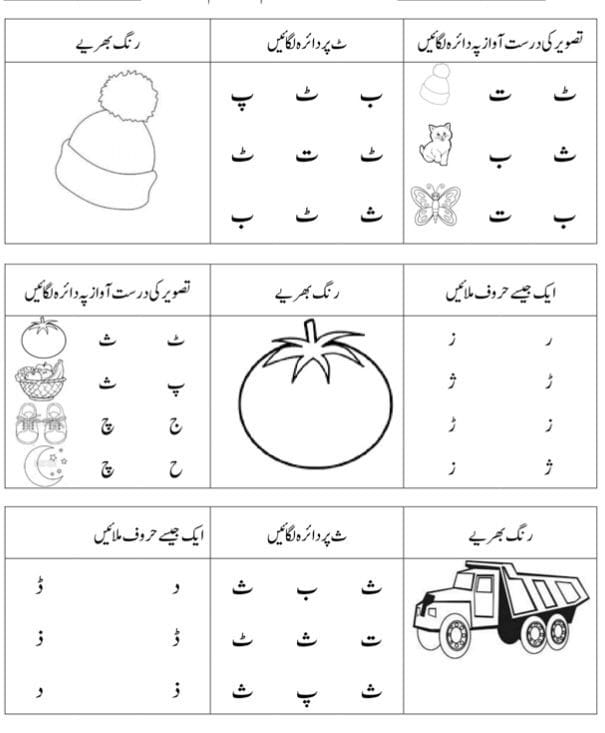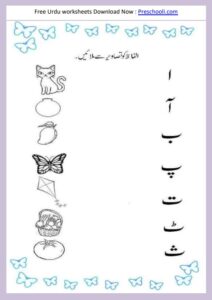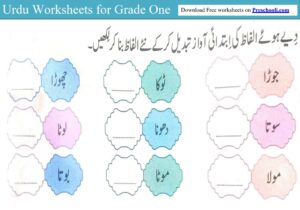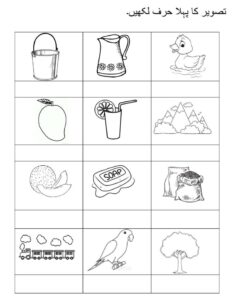Urdu Worksheets: The Ultimate Resource for kids Urdu Learners
Learning a new language is an enlightening journey that opens countless doors to different cultures and communities. For the vast diaspora of Urdu speakers around the world, and for those who aspire to connect with the rich Urdu heritage, the concept of teaching and learning the language is a cherished endeavor. As educators, caregivers, and learners, we navigate this journey with the aid of powerful tools, which brings us to the focal point of this discussion – Urdu worksheets, the unsung heroes of language learning.
In this comprehensive guide, we will explore how Urdu worksheets can serve as potent learning aids at various stages of language development, much like that of a young sapling growing roots deep into the earth, which eventually gives rise to a towering tree bearing the fruits of knowledge and expression.
Understanding the Essence of Urdu Worksheets
Demystifying Worksheets
Before we delve into how worksheets can be a game-changer in Urdu language education, let’s understand what exactly worksheets are. They are essentially a structured piece of paper designed to accompany a lesson or activity, generally used by students to record responses and organize information.
The Urdu Perspective
When these tools of learning are coupled with the melodic and mystique-rich language of Urdu, we witness the birth of an effective and engaging method for teaching and learning. Urdu, known for its flowery expressions, sweet lyrical tone, and the treasure trove of poetry and literature, can be an amazing language to learn through the use of worksheets that capture its essence and complexity.
The Role of Worksheets in Educational Settings
Whether in a formal educational setup, a home-schooling environment, or a casual learning space, the adaptability of Urdu worksheets is such that they can cater to diverse needs and age groups. Each worksheet is designed with a specific learning objective, which could range from phonetics and vocabulary building to grammar and sentence formation.
For Little Learners
Preschool and kindergarten are the foundational years of a child’s educational journey. In these formative years, the aesthetic appeal and interactive elements of Urdu worksheets for playgroup can captivate the attention and foster the learning of young ones. The use of vibrant colors, pictures, and simple activities can help make the language more approachable and fun, setting a positive tone for future learning endeavors.
Primary Education
As children progress to elementary levels, the focus shifts toward more structured learning while keeping the content lively and engaging. Worksheets at this stage can include more complex activities such as word searches, crosswords, and fill-in-the-blanks that build upon their growing language proficiency. Inclusion of themes like nature, seasons, and daily activities can make the worksheets relatable and therefore, more effective.
Secondary Education
For older students, secondary school levels warrant a more comprehensive approach to language learning, and the worksheets mirror this need. Worksheets for adolescents could encompass more in-depth exercises like composing short stories and essays, unraveling the nuances of poetry, and indulging in critical analysis of Urdu literature.
A Multisensory Experience
Language learning, especially for young learners, benefits greatly from a multisensory approach. Urdu worksheets can leverage different senses and learning styles to accommodate a wider range of learners.
Visual Learning
The use of images and illustrations can aid visual learners in making connections between words and their meanings, which is particularly useful in a language as rich in imagery as Urdu.
Auditory Learning
Audio-visual elements can be added to worksheets where students can listen to the pronunciation of words or phrases, enabling auditory learners to mimic and refine their spoken Urdu.
Kinesthetic Learning
Physical interaction with worksheets like tracing, coloring, and cutting can enhance the learning for kinesthetic learners. Practical engagement can reinforce retention and understanding of language concepts.
Customizing and Personalizing Worksheets
Flexibility is crucial when it comes to learning materials, especially in diverse settings and with unique learners. Customization allows educators and caregivers to tailor worksheets to suit specific learning goals and individual students’ needs.
Adapting to Different Learning Paces
Some students might require more reinforcement or practice of certain concepts. Customizing worksheets can provide the additional support they need to master the content at their own pace.
Addressing Diverse Teaching Philosophies
Educators and parents may follow different pedagogical approaches. Customized worksheets reflect the distinct teaching philosophies, ensuring coherence and alignment with the overall learning plan.
Celebrating Cultural Specifics
Language is deeply entwined with culture. Customized worksheets offer an opportunity to infuse cultural elements that resonate with the learners, thereby instilling a sense of belonging and appreciation for the roots of the language.
The Digital Dimension
The advent of digital platforms has expanded the horizon of educational resources, making them more accessible and interactive. Urdu worksheets have also seen a significant transformation, with the digital realm providing a space for innovation and creativity.
Interactive Quizzes and Games
To cater to the tech-savvy generation, digital Urdu worksheets can be designed as interactive quizzes and games, making learning a competitive and engaging venture.
Smartphone and Tablet Apps
With the availability of numerous apps, learning Urdu has become more convenient and on-the-go. Apps offering a variety of Urdu worksheets ensure that learning doesn’t have to stop when the class or session ends.
e-Libraries and Online Repositories
Online libraries and repositories are treasure troves of downloadable worksheets for teachers, parents, and students. An array of resources, from worksheets for beginners to those for advanced learners, is only a click away.
Crafting Effective Learning Pathways with Urdu Worksheets
Pathway to mastering the Urdu language is paved with continuous practice and exploration
Progression and Mastery
Worksheets play a pivotal role in mapping the progression of learning and providing a measurable yardstick of mastery. They offer a structured path whereby students can observe and take pride in their own development
Continuous Engagement
By introducing new content through varied worksheets, educators maintain a high level of interest and involvement. The timely refresh of worksheets ensures that learning remains a dynamic and ongoing process.
Reinforcing Learning with Feedback
The completion of worksheets also allows for feedback and assessment, which are essential components of the learning cycle. Constructive feedback enables students to correct errors and apply improved methods in their next attempts.
The Concept of Play and Learn
The concept of play and learn is not just for toddlers and preschoolers. In fact, it can be a potent approach for learners of any age. Urdu worksheets designed as games and puzzles blur the boundaries between play and study, fostering an environment where learning feels like an adventure rather than a chore
Recreating the Magic of Childhood
The nostalgia that comes with certain game elements can make learning a more joyful experience, akin to the carefree days of childhood where discovery and fun went hand in hand
Cognitive and Emotional Benefits
Playful worksheets can stimulate creativity, enhance problem-solving skills, and evoke a sense of wonder and curiosity. These intangible benefits contribute to a holistic learning experience that nurtures both the mind and the spirit
Fostering Collaboration
Group activities and games within worksheets encourage collaboration and teamwork. Learning becomes a social experience, allowing participants to help each other and learn from their peers
Beyond Worksheets: Complementary Resources
While the focus of this guide is on Urdu worksheets, it’s important to recognize the value of a holistic instructional approach. Worksheets are just one piece of the puzzle; they work in synergy with other learning materials and strategies to ensure a well-rounded learning experience.
Workbooks and Activity Books
Supplementing worksheets with workbooks and activity books provides a continuum of learning, with each resource building on the previous one. Workbooks often offer a structured progression of exercises, while activity books introduce hands-on tasks that spur interaction and practical application of knowledge.
Flashcards and Posters
Flashcards and posters are often used alongside worksheets to reinforce learning through constant exposure to words, phrases, and concepts. They are popular tools for quick, visual revision and can transform any space into an impromptu Urdu learning corner.
Interactive Boards and Technology
In classrooms and educational centers, interactive boards and technology come into play, turning language learning into an immersive, exploration-driven experience. They complement the versatility of worksheets by providing a more dynamic platform for engagement.
Embracing The Continuous Evolution of Learning
In conclusion, the adoption of Urdu worksheets in educational settings signifies a commitment to the continuous evolution of learning and teaching practices. As educators and caregivers, it’s essential to embrace the rich potential that these resources offer and to use them as vehicles that transport our students to new heights of command over the Urdu language.
Start incorporating Urdu worksheets into your lesson plans or home studies today, and watch as they enrich and enliven the process of Urdu language acquisition for your students or children. These resourceful sheets are not mere pieces of paper, but tools that mold minds and hearts into fluent and expressive Urdu speakers, capable of transcending linguistic and cultural boundaries.
Join our Facebook Group



